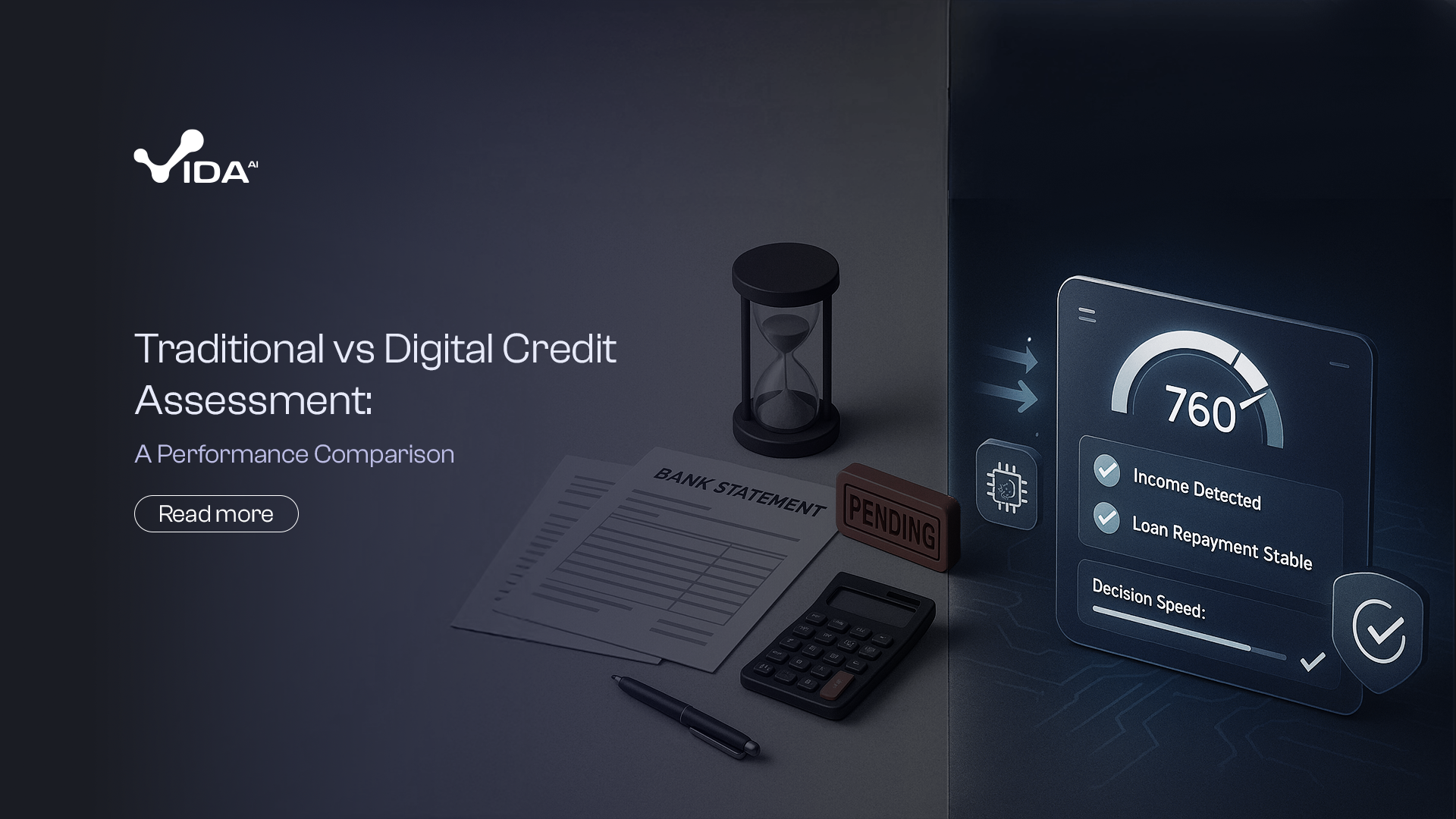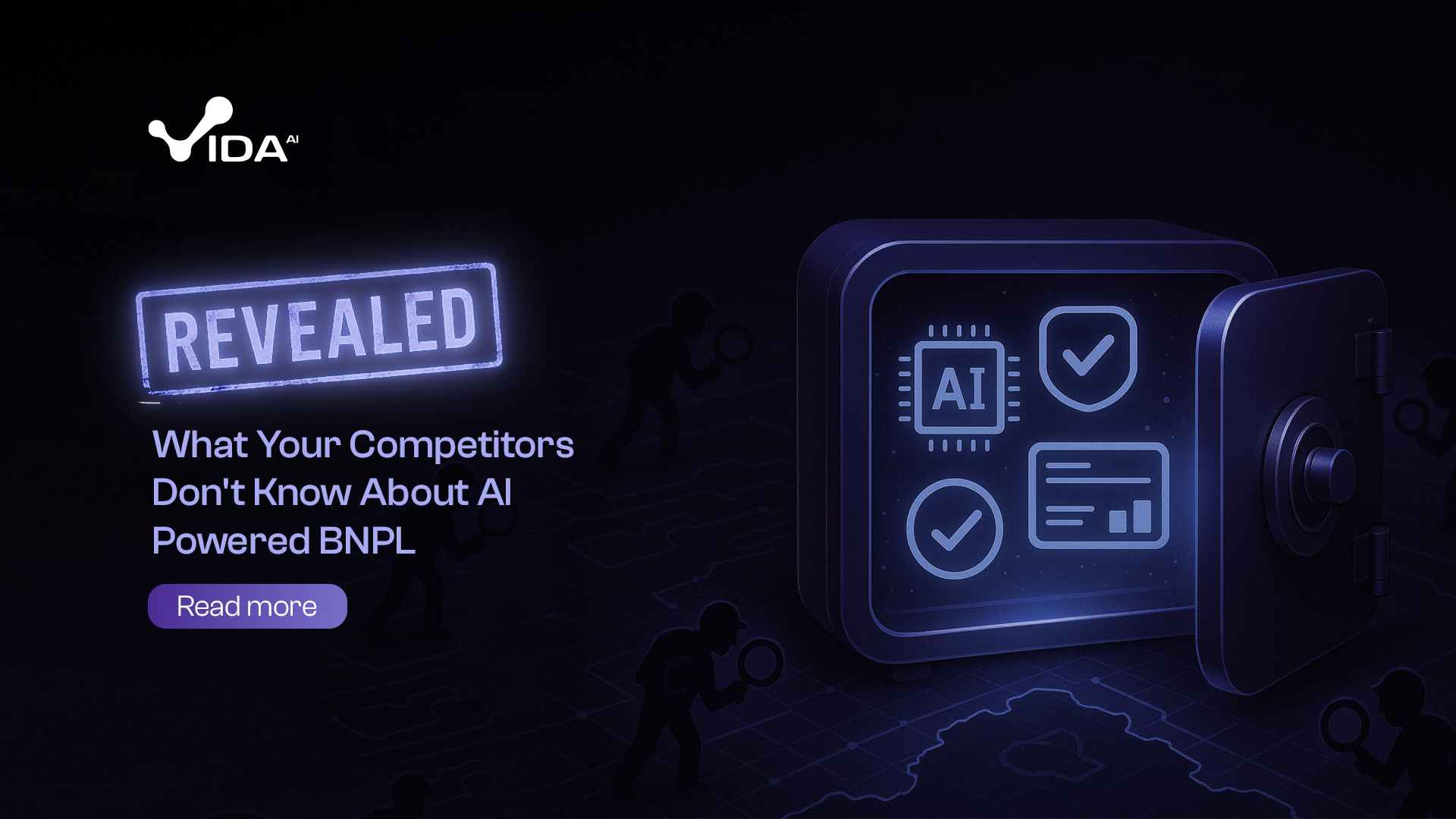back to Articles
Traditional vs Digital Credit Assessment: A Performance Comparison

Eniayewu Josephine
Content Writer
The lending industry stands at a crossroads between time-tested traditional credit assessment methods and revolutionary digital approaches powered by artificial intelligence and alternative data. Financial institutions evaluating these approaches require comprehensive performance comparisons that quantify benefits, risks, and implementation considerations. Evidence overwhelmingly demonstrates digital credit assessment's superiority across key metrics while traditional methods retain value in specific scenarios.
Traditional Credit Assessment Methodology
Conventional credit evaluation relies primarily on credit bureau data, debt-to-income ratios, employment verification, and manual underwriting judgment. This approach dominated lending for decades due to regulatory familiarity, established processes, and risk manager comfort with understood methodologies.
Manual underwriting processes involve human review of applications, documentation verification, and subjective risk assessment. Experienced underwriters apply judgment to complex situations that automated systems might handle poorly, but human review introduces inconsistency and processing delays.
Documentation requirements include tax returns, pay stubs, bank statements, and employment verification that borrowers must provide physically or electronically. This process creates friction and delays while providing snapshots rather than comprehensive financial behavior analysis.
Digital Credit Assessment Capabilities
Modern digital platforms process thousands of data points simultaneously, creating comprehensive borrower profiles that far exceed traditional credit report limitations. Machine learning algorithms identify patterns and relationships invisible to conventional analysis methods.
Alternative data integration includes bank transaction analysis, utility payment history, rent payments, social media activity, device usage patterns, and hundreds of other data sources that reveal creditworthiness indicators missed by traditional scoring.
Real-time processing enables instant credit decisions without manual intervention for most applications. Automated systems analyze complex data relationships in seconds, providing immediate responses that improve customer experience while reducing operational costs.
Continuous learning capabilities allow digital systems to improve accuracy over time as they process more applications and observe actual loan performance. Unlike static traditional models, AI systems adapt to changing economic conditions and borrower behavior patterns automatically.
Performance Comparison: Accuracy and Predictive Power
Default prediction accuracy represents the most critical performance metric for credit assessment systems. Independent studies consistently demonstrate digital assessment superiority in identifying borrowers likely to default while approving creditworthy applicants.
False positive rates (rejecting good borrowers) decrease by 20-30% with digital assessment, enabling lenders to capture additional profitable business without increasing risk. This improvement directly translates to revenue growth and market share expansion opportunities.
False negative rates (approving bad borrowers) drop by 25-35% through digital assessment's superior risk identification capabilities. Reduced defaults improve portfolio performance and profitability while reducing collection costs and charge-off expenses.
Processing Speed and Efficiency Analysis
Traditional underwriting typically requires 3-15 days for final approval, depending on application complexity and documentation completeness. Manual processes create bottlenecks that frustrate borrowers and enable competitors to capture time-sensitive business opportunities.
Digital assessment provides instant preliminary decisions with final approval often completed within hours rather than days. This speed advantage proves crucial in competitive lending markets where quick responses capture customer attention and loyalty.
Operational efficiency improvements through digital assessment reduce processing costs by 40-60% while improving decision quality. Automated systems handle routine applications efficiently, allowing human expertise to focus on complex cases requiring judgment.
Scalability advantages enable digital systems to handle volume fluctuations without proportional staff increases. Peak application periods that overwhelm traditional processes are managed seamlessly through automated digital assessment platforms.
Customer Experience Impact
Application abandonment rates decrease significantly with digital assessment due to reduced friction and faster response times. Traditional processes with extensive documentation requirements and long waiting periods lose potential borrowers to more responsive competitors.
Customer satisfaction scores improve when applicants receive quick, accurate decisions with clear explanations. Digital systems provide transparency about decision factors that help borrowers understand approval or denial reasons more clearly than traditional processes.
Mobile optimization of digital assessment enables convenient application submission and status tracking that meets modern consumer expectations. Traditional processes requiring physical document submission and in-person visits create barriers that discourage applications.
Accessibility improvements through digital channels serve underbanked populations who may lack traditional credit histories but demonstrate creditworthiness through alternative data sources. This market expansion creates new business opportunities while promoting financial inclusion.
Future Evolution of Credit Assessment
Artificial intelligence capabilities continue advancing rapidly, promising even greater improvements in credit assessment accuracy and efficiency. Emerging techniques like deep learning and natural language processing may unlock additional alternative data value.
Real-time data integration through open banking and API connectivity will enable more current and comprehensive borrower assessment. Dynamic risk evaluation based on recent financial behavior may replace static point-in-time assessments.
Blockchain technology could provide tamper-proof credit histories and streamlined verification processes that reduce fraud while improving assessment accuracy. Distributed ledger systems may enable instant verification of identity, income, and employment information.
The performance comparison between traditional and digital credit assessment overwhelmingly favors digital approaches across key metrics including accuracy, speed, cost-effectiveness, and customer experience. While implementation requires careful planning and risk management, the competitive advantages and financial benefits make digital assessment adoption essential for lending industry success.
Join Now to reduce defaults, speed up approvals, and scale smarter with AI-driven credit assessment.

